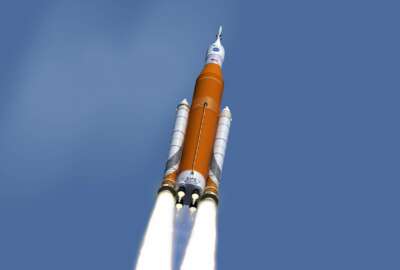NASA is going to have to shed some responsibilities and focus on its primary mission if it wants to return to the moon, and continue on to Mars. That’s the opinion of Harrison Schmitt, whose resume includes being a retired astronaut, geologist, professor and U.S. senator. Schmitt, who flew on Apollo 17 and is the only professional scientist to have visited the moon, said these days NASA is older, more bureaucratic and has more on its plate than it did in the early 1970s.
“I think if you want to implement the president’s new initiative, the directive to return to the moon and go on to Mars, NASA’s going to have to be reorganized more along the lines of what we had in Apollo,” Schmitt said on Agency in Focus: NASA.
Back then, he said, the agency was smaller, younger, and almost entirely focused on traveling to the moon. Aside from a small group dealing with aeronautics — a holdover from the agency’s predecessor — and another small group looking to the future, the entire agency was working toward that single goal.
“The NASA that developed and accomplished the Apollo missions was a much more professional and energetic NASA than you have today,” Schmitt told the Federal Drive with Tom Temin. “It was younger by a long shot, by a factor of two, about. The average age of most of the engineers and skilled workers, some 400,000 of them in NASA and in industry, most of them in industry, the average age was in the 20s.”
That’s not the only thing that’s changed since Schmitt’s tenure in NASA. Back then, the organization was split over whether to send scientists into space, or just have them train astronauts to perform research. Meanwhile, outside groups like the National Academy of Sciences and the U.S. Geological Survey were also pushing to include scientists on NASA missions. They eventually won out over the opposition.
“I think that once the six scientists who were selected first were in the program, that that started to fade,” Schmitt said. “Not rapidly, but it started to fade, that attitude within NASA, and we became a major and integral part of the program.”
The compromise was that the scientists went through Air Force pilot training. And everyone, including the astronauts, went through Navy helicopter training. While not everything they learned was directly applicable to piloting spacecraft, Schmitt said a lot of it was about joining the community, becoming part of the culture. It was a rite of passage.
Of course, there were practical aspects as well.
“Another part was to learn, psychologically, how to put your faith in a machine,” Schmitt said. “That’s what an airplane is, and that’s what a spacecraft is. The more of those kinds of machines that you train to fly, the better you’re going to be at the next one.”
By the time he went to the moon, Schmitt said, he knew how to do the job and handle the risks. That let him concentrate on the exploration side of being on the moon. While there was a plan for exploration based on photographs taken on previous missions, they had no idea whether things would change. So Schmitt was responsible for modifying the exploration plan if that happened.
And that requires a mental agility that can’t easily be taught in NASA training, Schmitt said. That kind of ability to react and improvise in the moment comes from the comfort of familiarity with your field. Pilots have that kind of ability from prior training with aircraft and spacecraft. Scientists, on the other hand, are more comfortable with that in investigation and exploration.
That’s why, he said, it was so important, then and now, for NASA to send professional scientist into space.
Copyright
© 2024 Federal News Network. All rights reserved. This website is not intended for users located within the European Economic Area.
